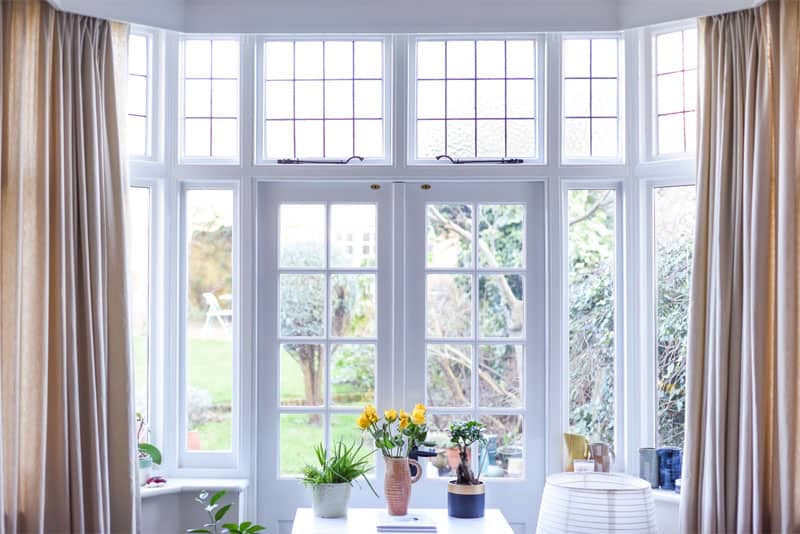How to Buy Replacement Windows
For windows being installed in new homes, nailing fins are used to attach the window to a rough opening in the wall. Replacement windows don’t have this, as they are attached to existing frames using fasteners that attach to the window assembly itself, making it easier to install.
It is essential to obtain the right measurements of openings before you buy replacement windows. You’ll also need to determine whether you need operable or fixed units. Fixed units have at least one operable sash which will contain at least one pane of glass.
The window frame itself is made up of a head, jamb, side jamb and sill.
Types of Windows
Before investing in new windows, you’ll need to think about the appearance of it and whether it needs to open. You’ll also need to consider how the window will be maintained, and how much light it will allow into your room.
Like many homes in Houston, if you have an older property, you’ll probably want to consider ‘double hung’ windows which have operable sashes in both directions. Some of these windows contain tilting sashes that pivot inwards, allowing cleaning from the inside which is particularly useful for second-floor windows.
Sliding windows contain several panels which move horizontally across tracks, allowing the window to be opened and provide ventilation. In contrast, accent windows are fixed, so do not allow for ventilation. However, they do come in a range of different shapes.
Glass block windows are made up of precisely that – glass blocks secured together with mortar. As the glass is thick, it cannot be broken easily and is obscure, so it provides privacy. However, it still allows light in. These types of windows can even incorporate dryer vents or vents to allow fresh air inside.
Basement hopper windows have a hinged bottom and open at the top. They enable airflow through a basement and usually are positioned lower down on an outside wall.
Other Types of Window
In addition to the most common types of windows in Houston houses listed above, here are some other types of window which are sometimes used.
- Projection Window. Three or more individual units which are positioned together at angles. Bay windows are similar but fit together at greater angles and project further from the house.
- Picture Window. Unlike the above, these are fixed and are ideal for rooms which require a lot of light. They have the added benefit of offering fantastic views as well.
- Casement Window. They are hinged at one end and pivot at the other, so are easy to open and provide adequate ventilation.
- Awning Window. This type of window features a hinged sash which tilts outwards at the bottom. This means the rain is kept out when the window is opened.
- Skylight. A fixed or opening window connected to the ceiling which allows light to enter the room. Tubular versions also exist which channel light from the roof to a ceiling diffuse, brightening the space.
- Storm Window. An energy-efficient single pane window which contains space between the window that acts as insulation.
Frame Materials
Consideration needs to be made to frame material as it affects things like maintenance, heat transfer and durability.
Vinyl is impact resistant and durable and is otherwise known as PVC. Hollow chambers inside lower heat transfer and condensation, and it doesn’t fade or rot, nor requires painting.
Aluminum is a light, durable and easy to handle material which is also affordable. It also stands the test of time, requiring minimal maintenance and doesn’t corrode.
Wood is another good insulator and prevents the buildup of condensation. However, it doesn’t usually come finished, and if it does, color options are limited.
Clad Wood covers the outside frames with a jacket of aluminum, preventing rot and improving durability.
Fiberglass is another durable and waterproof material which won’t rust, corrode, rot, bend or crack. It lasts for years and is easy to maintain. Thanks to its ability to expand and not conduct heat, the frames are long-lasting.
Energy Efficiency
Windows typically have between two and three layers of glass in them, which usually features argon gas between them to provide further insulation. This also helps reduce the buildup of condensation.
Low emissivity glass also exists that contains a coating which blocks light, helping homes keep cool on warmer days, and warm on colder days. This is because it allows in light but blocks heat and the amount of UV entering our home. It also helps retain the heat within our rooms.
Other Things to Consider
- Tempered Glass. A safety feature where if the glass is smashed, it crumbles, instead of shattering.
- Sound Transmission Class Rating. How well noise is blocked from the outside. A higher number means less sound occurs through the window.
- Double Strength Glass. A thicker type of glass, at less risk of breaking than a single pane.
- Rough Opening Dimensions. Describes the dimensions of the opening the window fits into. Actual measurements are slightly smaller than this to allow for installation materials.
- Grids or Grilles. Makes a window appear to have multiple panes. They can either be encased in the glass itself or be mounted on the surface.
How to Properly Clean Windows
Use a gallon of water mixed in with either a teaspoon of baby shampoo or between one and a half cups of vinegar to make a mixture ideal for general cleaning.
Follow these steps for streak-free windows:
- 1. Rinse the entire window with clean water.
- 2. Use a sponge to apply the above mixture, using a uniform pressure as you go.
- 3. Quickly rinse, dry and run down, not letting the solution dry on the glass.
- 4. Use a lint-free cloth to wipe the frame and sill.

